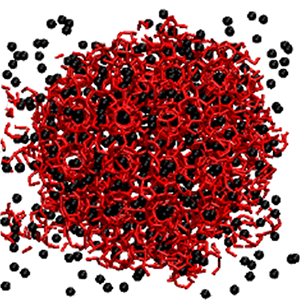
The Doherty group is broadly interested in crystal engineering in support of product and process design for crystalline products, particularly for pharmaceutical applications. They are interested in all aspects of manipulating and controlling the properties of crystals, including nucleation, growth, dissolution, polymorph transitions, solvent effects, and the influence of impurities and additives on crystal shape.
The Fredrickson group has developed rare event sampling techniques for field-based simulations of phenomena including nucleation of ordered block copolymer mesophases and identification of kinetic pathways for defect elimination in directed self-assembly approaches to advanced semiconductor patterning (lithography). The group is also developing models to understand non-solvent-induced phase separation processes for forming asymmetric membranes used in water purification and separations.



